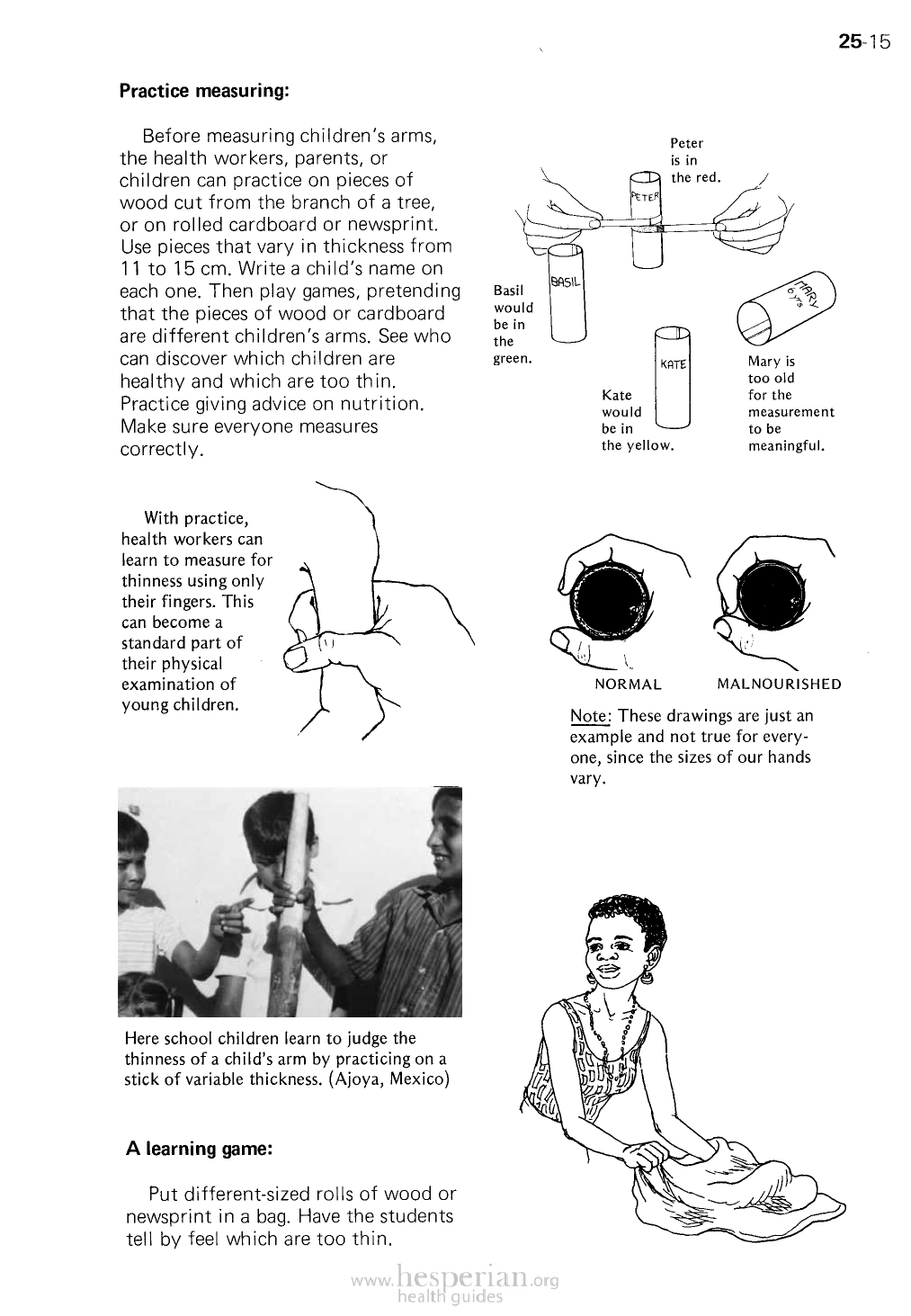
Practice measuring:
Before measuring children’s arms,
the health workers, parents, or
children can practice on pieces of
wood cut from the branch of a tree,
or on rolled cardboard or newsprint.
Use pieces that vary in thickness
from 11 to 15 cm. Write a child’s
name on each one. Then play games,
pretending that the pieces of wood
or cardboard are different children’s
arms. See who can discover which
children are healthy and which are
too thin. Practice giving advice
on nutrition. Make sure everyone
measures correctly.
With practice,
health workers can
learn to measure
for thinness using
only their fingers.
This can become
a standard part
of their physical
examination of
young children.
Peter
is in
the red.
25-15
Basil
would
be in
the
green.
Kate
would
be in
the yellow.
Mary is
too old
for the
measurement
to be
meaningful.
NORMAL
MALNOURISHED
Note: These drawings are just
an example and not true for
everyone, since the sizes of our
hands vary.
Here school children learn to judge the
thinness of a child’s arm by practicing on a
stick of variable thickness. (Ajoya, Mexico)
A learning game:
Put different-sized rolls of wood or
newsprint in a bag. Have the students
tell by feel which are too thin.